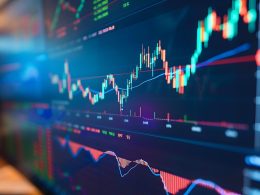by Kristina Hooper, Chief Global Market Strategist, Invesco
Key takeaways
|
The global economy China’s changing COVID policy, central bank meetings and inflation expectations promise to make this a memorable month for the global economy.
|
Equity markets For markets, December has historically tended to be a good month for risk assets, inspiring the term “Santa Claus Rally” to describe late December surges. |
The U.S Federal Reserve But this year, markets have largely been driven by the Fed, and earnings warnings could exert downward pressure on stocks. |
- Bank of Canada meeting (BoC). Canada has been at the vanguard of central banks downsizing rate hikes, so it’s good to keep an eye on the BoC. Canada is also facing many of the same challenges as the U.S. economy, with a tight labour market and high wage growth; it also has run the risk of slowing its economy too much because of its “fast and furious” rate hike cycle. Like the U.S. yield curve, the Canadian yield curve has experienced a deep inversion. The Bank of Canada was initially expected to hike rates by 50 basis points at its December meeting, although there is a growing likelihood of a 25 basis point hike. A 25 basis point hike, in my view, is more likely and would ease the pressure on the Canadian economy — as well as lead the way for other central banks to follow in normalizing the size of rate hikes.
- Changes to China’s COVID policy. China is making meaningful and positive alterations to its COVID policies. Last week China announced a new initiative to encourage further vaccinations for the elderly, and it has also recently relaxed its COVID testing requirements in some major cities. This news has been very well received by investors, who have driven up Chinese stocks. And it has been reported that China may announce this week a new, less stringent set of national COVID policies that could be stimulative for the economy, which could provide another strong boost to Chinese stocks.
- China’s growth target. Senior policymakers in China will meet in mid-December for the Central Economic Work Conference (CEWC) in order to agree upon key economic policies for the coming year. All eyes will be on the growth target set for 2023 — specifically whether the target will be 5% or above. I expect it will be 5% or above, and that there will be supportive fiscal policies to help China reach that target. In addition, the People’s Bank of China recently cut its reserve requirement ratio, and I expect its supportive policies to continue. This could set the stage for significantly stronger economic growth in 2023.
- The Tankan Index. This index helps us take the temperature of the Japanese manufacturing sector, and it’s expected that the upcoming reading on Dec. 14 will show conditions have improved since the previous quarter. However, some recent economic data points from Japan have disappointed, such as retail sales. A disappointing Tankan Index could suggest a less-positive outlook for the Japanese economy and weigh down Japanese stocks in the short term, despite a supportive central bank.
- U.S. Inflation measures. I’m especially keeping an eye on the U.S. Consumer Price Index (CPI) and Producer Price Index (PPI), as well as preliminary inflation expectations from the University of Michigan. While I do believe that a 50 basis point rate hike in December is almost a “fait accompli,” there is a small chance the U.S. Federal Reserve (Fed) could hike 75 basis points instead. I don’t believe that the higher wage growth in last week’s jobs report would be enough to prompt a higher hike on its own; however, if it is followed up with higher-than-expected inflation or inflation expectations, it could change the Fed’s mind. Recall that in June, the Fed had communicated it would only hike rates by 50 basis points. However, just a few days before the rate announcement, both CPI and Michigan inflation expectations were higher than expected, and the Fed pivoted to a 75 basis point hike. And so these upcoming readings have a small chance of influencing the Fed’s decision in December, although most likely they will just contribute to higher volatility.
- The Federal Open Market Committee. FOMC economic projections and the accompanying press conference are scheduled for Dec. 14. At the end of the day, markets aren’t focused on December’s rate hike — they’re focused on what the terminal rate will be and when the Fed will hit the “pause” button, because that will help dictate how the stock market performs and when an economic recovery can unfold. And it is the FOMC press conference as well as the “dot plots” that will give us a far better idea of that.
- The European Central Bank (ECB). It looks like inflation may have peaked in the eurozone, increasing the likelihood that the ECB will downshift to a 50 basis point hike at its Dec. 15 meeting. However, at a recent conference, ECB President Christine Lagarde disagreed that inflation had peaked and warned about the danger of letting inflation expectations become unanchored, which suggested she may err on the side of greater hawkishness in reinforcing ECB credibility.
Watching the markets
December has tended to be a good month for risk assets, inspiring the term “Santa Claus Rally” to describe late December surges. It’s been the third-best month for both the S&P 500 Index (since 1950) and the NASDAQ Composite (since 1971), and the second-best month for the Russell 2000 Index since 1979.1 International stocks also have historically participated in Santa Claus Rallies. For example, the FTSE 100 Index’s average monthly return for December is 2.55%, the MSCI Emerging Markets Index’s average return is 3.18%, the MSCI EAFE’s average return is 2.34%, and the Hang Seng’s average return is 1.79%.2
But this year, markets have largely been driven by the Fed and other central banks because of their historic monetary policy tightening, and so I expect these central banks will likely continue to have an outsize impact on stocks in December. In addition, lowered earnings revisions could exert downward pressure on stocks. Therefore, I expect significant volatility for the month, although the bias is likely upward given historical trends. I suspect this will be a December to remember for the global economy and markets — as we get ready for 2023.
Footnotes
- 1Source: The Stock Trader’s Almanac 2023, written by Jeffrey Hirsch and Christopher Mistal
- 2Source: Bloomberg, L.P., from 1990 through 2021
















